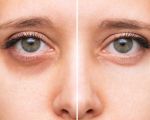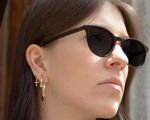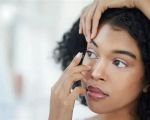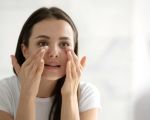How to Safeguard Your Vision as an Athlete
As an athlete, your vision is just as important as your physical strength and agility. Whether you're playing basketball, soccer, or running marathons, clear eyesight plays a pivotal role in your performance. Unfortunately, many athletes overlook the importance of eye care, which can lead to a variety of vision problems. In this article, we’ll explore how you can prevent eye issues, protect your vision, and enhance your overall performance.
1. The Importance of Eye Health in Sports
When I first started playing sports seriously, I never considered the impact of my eyesight on my game. However, over time, I began to realize how much my vision affected my performance. Clear vision is crucial not just for seeing the ball but for being able to anticipate plays and respond quickly. That’s when I understood that taking care of my eyes was just as essential as training my muscles.
Maintaining healthy eyes can prevent various problems such as blurry vision, eye strain, and even severe injuries. Athletes who neglect eye protection or ignore eye discomfort can suffer from long-term damage that could end their careers prematurely. From regular eye check-ups to using proper eye protection, there are numerous ways to keep your vision in top condition.
2. How Eye Injuries Can Affect Athletes
Eye injuries are common in many sports, especially contact sports like basketball, football, and hockey. In fact, a study I came across found that athletes in high-contact sports are at a significantly higher risk of sustaining eye injuries compared to those in non-contact sports. These injuries can range from minor scratches to severe trauma like retinal detachment or even permanent vision loss.
Take the case of a soccer player I know who suffered from a corneal abrasion after getting hit in the eye by an opposing player’s elbow. It was a minor injury, but it left her with blurred vision for weeks, which affected her performance and required several visits to the optometrist. This could have been prevented with the right protective eyewear.
Moreover, even less traumatic injuries like eye strain can have a cumulative effect on an athlete’s vision over time. Spending hours in bright stadium lights or in front of screens for game analysis can cause discomfort, fatigue, and even long-term vision issues.
3. How to Prevent Eye Problems in Athletes
3.1 Regular Eye Check-ups
The first step in preventing eye problems is to get your eyes checked regularly. Eye exams are essential for identifying early signs of issues like nearsightedness, farsightedness, or other conditions that may affect your ability to perform. I personally recommend scheduling eye exams at least once a year, especially if you’re an athlete who relies heavily on sharp vision for your sport.
3.2 Use Protective Eyewear
One of the best ways to prevent eye injuries is by wearing the proper protective eyewear. Many athletes skip this step, thinking it's unnecessary or uncomfortable. But trust me, the protection far outweighs the temporary discomfort. Sports goggles or face shields are specifically designed to shield your eyes from impacts and hazards, making them essential for sports like basketball, soccer, football, and even cycling.
Not only do protective goggles guard against physical injuries, but they also help prevent environmental factors like wind, dust, or sun glare from affecting your vision. I’ve always worn goggles in high-contact sports, and it’s made a huge difference in protecting my eyes from injuries.
3.3 Stay Hydrated and Take Breaks
Hydration is key to maintaining eye health. Dehydration can lead to dry eyes, which can cause irritation, redness, and even blurred vision. As an athlete, you know how important it is to stay hydrated during training and competitions. But don’t forget that your eyes need moisture too. Drinking plenty of water and using lubricating eye drops when needed can help keep your eyes comfortable and functioning properly.
Additionally, taking regular breaks during intense training or competition can reduce eye strain. I always try to give my eyes a rest after focusing on a single task for too long, whether it’s looking at a screen or following a fast-moving object in the game.
3.4 Protect Against UV Rays
UV exposure is another major concern for athletes, especially those who train outdoors. Long-term exposure to harmful UV rays can lead to cataracts, macular degeneration, and other eye conditions that can affect your performance in the long run. This is where UV-blocking sunglasses come into play. I wear a pair of high-quality sports sunglasses whenever I’m outside for extended periods, and I recommend the same for any athlete, regardless of their sport.
Make sure to choose sunglasses that offer 100% UV protection and that fit securely, even during intense activity. Sunglasses not only protect your eyes from UV rays but also reduce glare, which can improve your vision in bright outdoor environments.
3.5 Pay Attention to Eye Strain
In today’s digital world, eye strain is a growing concern for athletes who spend time reviewing footage, studying tactics, or analyzing their performance on screens. Long hours staring at a screen can lead to discomfort, headaches, and blurry vision. To prevent eye strain, take frequent breaks, practice the 20-20-20 rule (every 20 minutes, look at something 20 feet away for at least 20 seconds), and adjust your screen’s brightness to a comfortable level.
3.6 Eat Eye-Healthy Foods
Diet plays a crucial role in maintaining overall eye health. Foods rich in vitamins A, C, and E, along with omega-3 fatty acids, can help protect your eyes from age-related damage and maintain sharp vision. I’ve noticed that incorporating leafy greens, carrots, salmon, and eggs into my diet has improved my energy levels and overall well-being, including my eye health.
Additionally, antioxidants found in foods like berries, nuts, and citrus fruits help combat oxidative stress, which can damage the delicate tissues in your eyes. Eating a balanced diet is one of the simplest ways to support your vision health as an athlete.
4. Real-Life Athlete Stories: The Impact of Eye Care
Let me share a few real-life stories to emphasize the importance of eye care for athletes. A professional baseball player I know once sustained a severe eye injury after being hit by a fastball. He wasn’t wearing a protective face shield at the time. Fortunately, he recovered after surgery, but it cost him months of recovery time and disrupted his career. This could have been avoided if he had invested in the right protective gear from the start.
On the other hand, a tennis player I trained with always wore sports goggles, even during casual matches. Not only did they prevent injuries, but they also helped her maintain sharp vision throughout her matches. Her commitment to eye protection paid off, as she was able to compete at the highest level without worrying about eye issues.
5. Conclusion: Protecting Your Eyes for the Long Run
As athletes, we’re often focused on building strength and improving performance, but it’s equally important to prioritize our eye health. Protecting your eyes not only prevents injuries but also ensures that you can perform at your best without any vision-related limitations. Regular eye exams, proper eyewear, hydration, and a healthy diet all play an essential role in maintaining optimal vision health. By taking care of your eyes, you’re setting yourself up for a successful and injury-free athletic career.








